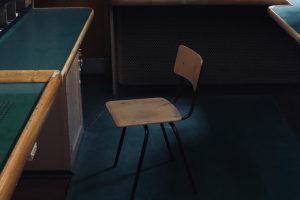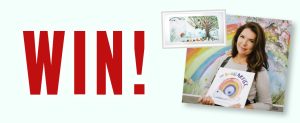By Sue Walsh
Lots of children struggle to express themselves on paper, whether writing fiction or non-fiction. Over the past eight years, I have tutored many children to help them improve their English. I would like to share some of my top tips with you, to help inspire your young authors to get writing.
Spontaneous writing
The first challenge is getting the young authors started and engaged with writing. Whenever I start with a new child, in order to ‘break the ice’, I begin by thinking up a series of short questions which they jot down answers to, for example:
- What sort of things make you laugh?
- What makes you angry?
- What do you miss?
- What do you fear?
- What do you hate?
- What do you love?
- What would you say to the moon?
I emphasise that there is no right or wrong way to answer, and that often, the first thing that comes to mind is usually the best. These questions may well prompt more questions – ‘Can I write about when my friend…?’ ‘ What do you mean by ‘what do you miss’?’ ‘Can the moon answer?’ You’ve barely got going, and quite naturally, the conversation has already begun. After all: it’s those we enjoy spending time with, who make us smile; that missing ‘something’ could be a place, an activity, the taste of a certain food; and speaking to the moon just needs the addition of imagination.
I refer to these short exercises as ‘spontaneous writing’. The point of the exercise is to write honestly. Many of the child’s senses are automatically activated. There’ll be humour, and above all, it will be individual. It has become so popular that often the first question I’m asked at the beginning of the session is, ‘Are we going to do spontaneous writing?’.
Gradually as your young author becomes more experienced and knows the routine, any fear of writing is replaced by a greater confidence.
Waking up
Similar short exercises can then be developed. ‘Waking up’ is an example, we begin with the following questions:
- Before you opened your eyes this morning, what did you hear?
- What was the first thing you felt physically?
- When you opened your eyes what could you see?
- What were the first thoughts that passed through your mind?
This emphasises the use of the senses, as well as focussing the children’s observations on a particular moment in time. Discussion about the responses follows, developing details and context. Following on from this preparation, writing a paragraph based on waking up becomes a straight forward assignment. What to write is no longer a problem. Every piece will be personal and unique.
It is only once the piece of writing is completed, that I’ll ask the children to check for errors, before they read it out aloud. I then read the piece back to them – it’s a very different experience listening to your work being read. Finally I ask – ‘What do you think?’ The proud smile usually says it all.
Follow this simple template: short questions or prompts; discussion; and an assignment; and an endless variety of topics that can used. Here’s another example:
A Moment
This exercise can be answered equally well on a journey – by train, car, or plane – as it can while sitting in a room, all you need is a view through a window.
Note down answers to the following questions, then complete the sentences using the present tense.
- What can you see? Focus on three or four points of interest. Pick out details rather than the generic.
Staring through the window I see…
- Stream of consciousness. Allow your thoughts to drift and be sparked by what you see?
The view reminds me of…
I am thinking …
3. What can you hear? Make a list of all the sounds around you.
I can hear…
- Describe how you feel.
I feel…
- Allow your mind to wander. What do you imagine is happening outside?
Outside I imagine…
Next, comes the poem. Using their notes, the young author writes a 2-3 line verse for each point (except for what is heard). In between each verse a repeated 2-3 lines is inserted which describes the sounds. Encourage the author to alter lines if they decide the lines don’t sound quite right.
Dreaming
I am sitting in the lounge,
On a blue settee.
A low table in front
Is piled with books and papers.
The clock ticks,
The blackbird sings.
Staring through the window
I see a house, curtains, two cars, a pavement, a driveway,
Plants, a dirty fence,
Some pipes and a lamppost.
The clock ticks,
The blackbird sings.
It reminds me of a gloomy day,
Everyone tucked up warm.
The clock ticks,
The blackbird sings.
I feel as if I am so tired
I could fall asleep.
The clock ticks,
The blackbird sings.
Outside I know my sister is doing
Maths homework.
Mum is shopping.
The clock ticks,
The blackbird sings.
S J Walsh
Encourage the children to explore different types of poems and techniques, and use them in their own poems. For example, write an ode – a homage addressed to a particular subject.
Ode to a room
Look around the room you are in.
- Make a list of seven objects (common nouns); they could be items of furniture, ornaments or pictures. Choose things that catch your attention or interest you.
- Choose an adjective to describe each noun and write it down next to the object.
- Look carefully at each chosen object and choose another adjective.
Read through your list of nouns and adjectives.
- Write a fact observation about each noun in the form of one or two sentences. You may decide to include all or some of your adjectives.
- Using the notes you’ve made, write an ode to the room you are in. Set it out as a poem. Begin each line with a capital letter. Other thoughts and ideas may come to mind as you begin, which you may also decide to include.
- Think of an interesting final line as a conclusion.
The Dining Room, by George Godfrey (aged 10)
List of nouns and adjectives:
- Table – oak – dented
- Chair – hard – upright
- Fireplace – brick – dusty
- Couch – worn – old
- Picture – faded – pale
- Clock – carriage – noisy
- Rug – woven – rippled
Observations:
- The oak table is marked and dented.
- There are six chairs, hard and upright.
- The red brick fireplace is boarded up. I can’t remember when, or if, a fire has ever been lit in it.
- The old couch sags in the middle but is as comfortable as a bed.
- A picture of sheep grazing in a field is the same view as from the window.
- The carriage clock ticks noisily – a wedding present to my parents.
- Beneath my feet I can feel the ripples of the rug like mountains and valleys.
Ode to a dining room
There is an old oak table in the centre.
I am leaning on it.
Six chairs, hard and upright fit tightly underneath.
Opposite the brick fireplace gathers dust.
The couch – worn and sagging reminds me of my favourite jumper.
Beneath my feet I feel the rug’s ripples,
Mountains and valleys.
Sheep graze in a field in a picture on the wall.
The carriage clock marks time aloud.
Outside the sky darkens.
For longer pieces of creative writing you can use formats and ideas from children’s classical literature as a springboard.
My Home: The Hobbit
Read an extract from The Hobbit by J.R.R. Tolkien which describes in detail the home of the hobbit, Bilbo Baggins. Ask the children to draw a picture based on the description, and then discuss what Bilbo’s home reveals about his character and interests.
Ask your young author to imagine standing outside their own home, and describe what they would see. Encourage them to pick out details and include personal comments or asides. Finally, after reading the piece aloud to a partner, the partner draws a picture based on the details they heard.
Varied approaches and subjects help to develop young authors abilities to observe, explore their emotions, their senses and the world around them. At the same time, you can reinforce basic grammar and widen vocabulary. With regular writing practice your young authors will not only improve their skills, but also learn more about understanding themselves. Exploring close relationships, and the immediate area in which we live, helps build a stronger sense of self.
But the main aim is to get them writing for enjoyment. – we all love a story.



